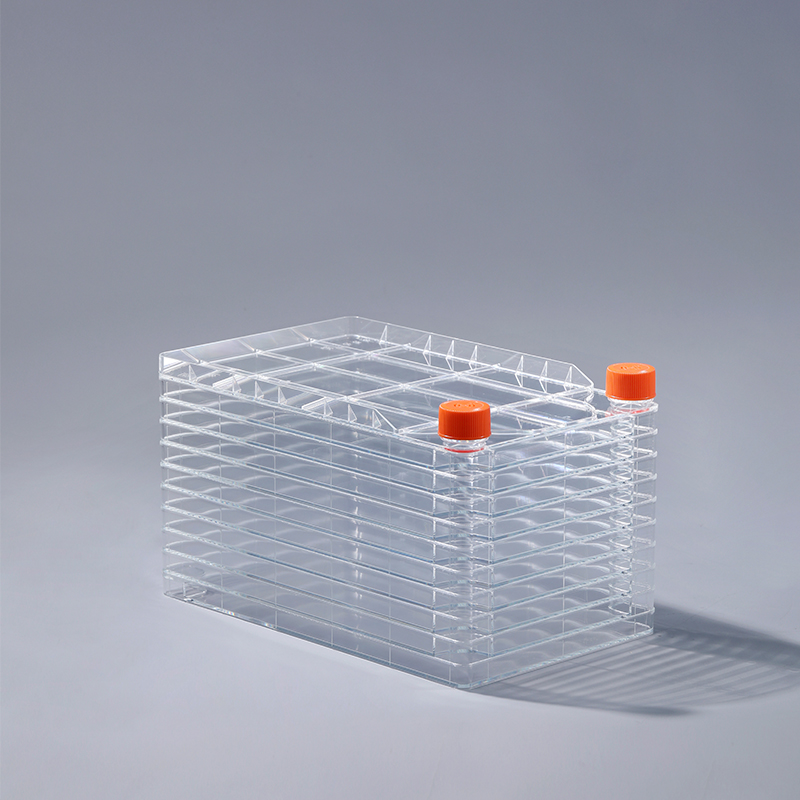je naprava za celično kulturo, ki je sestavljena iz ene ali več plasti glede na velikost območja kulture, ki lahko izvaja obsežno kulturo celic in je primerna za številna področja, kot so cepiva, farmacevtska industrija ali monomerno klonsko protitelo.celična tovarna lahko zadovolji adherentno celično kulturo, primerna pa je tudi za statično kulturo suspenzijskih celic. Adherentna kultura pomeni, da morajo biti celice med gojenjem pritrjene na steno posode za kulturo (stekleničko). Ko so celice pritrjene, se bodo hitro razširile, nato začele mitozo in hitro vstopile v logaritemsko fazo rasti. Na splošno je nekaj dni pozneje površina kulture pokrita in nastane gost celični monoplast, kot so celice Vero, celice HEK 293, celice CAR-T, MRC5, celice CEF, prašičji alveolarni makrofagi, celice mieloma, celice DF-1, Celice ST, celice PK15, celice Marc145 itd. uporabljajo metode adherentne kulture.cell factory
Suspenzijska kultura se nanaša na sistem tkivne kulture, ki goji posamezne celice in majhne celične skupine v tekočem mediju, ki ga nenehno mešamo ali stresamo. Rast suspendiranih celic ni odvisna od površine nosilca in raste v suspendiranem stanju v gojišču. Na primer, celice CHO, celice žuželk, celice BHK21 in celice MDCK se uporabljajo v suspenzijski kulturi.
Tovarna celic izkorišča prednosti večplastne strukture in velike površine ter se pogosto uporablja v industrijski množični proizvodnji za izpolnjevanje zahtev dvojnih potreb kulture privrženosti in kulture suspenzije, ki jo podpirajo številne znanstvenoraziskovalne ustanove in farmacevtska podjetja.
The cell factory utilizes the advantages of multi-layer structure and large area, and is widely used in industrial mass production to meet the dual needs of adherent culture and suspension culture, and is favored by many scientific research institutions and pharmaceutical companies.
The FAI climbed 5.9 percent year-on-year in the first 11 months of 2018, quickening from the 5.7-percent growth in Jan-Oct, the National Bureau of Statistics (NBS) said Friday in an online statement.
The key indicator of investment, dubbed a major growth driver, hit the bottom in August and has since started to rebound steadily.
In the face of emerging economic challenges home and abroad, China has stepped up efforts to stabilize investment, in particular rolling out measures to motivate private investors and channel funds into infrastructure.
Friday's data showed private investment, accounting for more than 60 percent of the total FAI, expanded by a brisk 8.7 percent.
NBS spokesperson Mao Shengyong said funds into weak economic links registered rapid increases as investment in environmental protection and agriculture jumped 42 percent and 12.5 percent respectively, much faster than the average.
In breakdown, investment in high-tech and equipment manufacturing remained vigorous with 16.1-percent and 11.6-percent increases respectively in the first 11 months. Infrastructure investment gained 3.7 percent, staying flat. Investment in property development rose 9.7 percent, also unchanged.
 English
English



















































